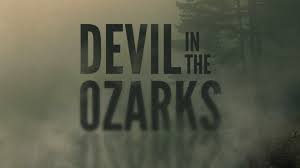The Chilling Legend of the Devil in the Ozarks

Introduction
The Ozark Mountains, known for their stunning landscapes and rich history, are home to numerous legends and myths. Among them, the tale of the ‘Devil in the Ozarks’ stands out as a chilling narrative that continues to attract enthusiasts of folklore and the paranormal. This legend intertwines native beliefs, early settler stories, and recent encounters that veil this picturesque region in an eerie allure.
The Roots of the Legend
The myth of the Devil in the Ozarks is deeply embedded in the culture of the area. Historical accounts suggest that early settlers encountered mysterious and frightening occurrences, often attributed to the presence of a demonic figure. According to local folklore, the Devil is said to manifest as a dark silhouette seen wandering through the dense woods and around lakes, instilling fear among the inhabitants. Some stories narrate encounters that include strange sounds echoing from the hills and sudden, unexplained events, fueling the legend.
Modern Encounters and Sightings
Despite being rooted in folklore, numerous recent accounts bring the tale of the Devil in the Ozarks into contemporary focus. In recent years, adventurers and ghost hunters have reported encounters that seem to resonate with the historical narratives. For example, a paranormal investigation team conducted research in a remote area of the Ozarks, documenting inexplicable sounds and witnessing fleeting shadows that moved beneath the trees. Social media has also sparked a resurgence in interest, with numerous videos and testimonies circulating among locals and tourists alike.
The Significance of the Legend
The significance of the Devil in the Ozarks goes beyond mere entertainment; it reflects the human inclination towards mythology in understanding the unknown. Local historian Martha Winters emphasizes that such legends serve to connect generations and incite deeper contemplation about our surroundings. These stories evoke a sense of mystery and curiosity about the natural world, encouraging exploration of the very areas that inspire such myths.
Conclusion
As tales of the Devil in the Ozarks continue to capture imaginations, the legend remains a vital part of the cultural fabric of the region. Whether viewed through a lens of skepticism or belief, the stories forge an essential link between the past and present. For those exploring the Ozarks, encountering the legend might only be a shadow away, reminding us of the tales that shape our understanding of both nature and folklore. As we move forward, the vibrancy of the Ozark folklore, including the ever-looming figure of the Devil, will likely persist, encouraging new generations to explore and retell these haunting narratives.









